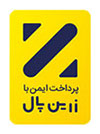Since you clicked on the link, I presume you are looking for ways to motivate (your) kids to learn new words in your own or another language. You are in for a treat! Whether you are a parent, grandparent, homeschooler, childminder or teacher – read on and you will find a treasure trove of tips and ideas on language learning.
I have the great pleasure to host this month’s blogging carnival for Multicultural Kid Blogs, and I asked my wonderfully talented and imaginative blogger friends to contribute with articles about making learning vocabulary fun. And Oh, girl! did they deliver (yes, they all happen to be girls) – even in the middle of the holiday season they wrote new posts and looked up their old articles on the topic. Take your time, make notes and have your bookmarking shortcut at the ready – enjoy!
ACTIVITIES
“Learning by doing” applies many things, and languages is certainly one of them, as pointed out in many of the posts.
Chores
When you think of fun things to do, chores are usually not at the top of your list, but they can become something enjoyable when you do them together with your kids and use the opportunity to introduce some new words. (Yes, you might spend more time on them and some you may have to redo, but hey, it’s all worth it!)
Jenny of Spanish Playground has a list of six chores and how you can incorporate new vocabulary into doing everyday tasks. The post is about learning Spanish, but can be applied to any language. Cooking together is many a child’s favourite to do at home. Judith of Little Bilingues has created a lovely, bilingual carrot cake recipe cartoon, where Zozo, the rabbit gives instructions in French and English. To prepare a dish, you need the ingredients, why not do like Amanda of Maroc Mama and send your (old enough) kids to pick up items from the shop – let’s hope they return with the right stuff!
Physical exercise
New words can easily be incorporated into doing physical exercise and being out and about. Read how Giselle of Kids Yoga Stories teaches her daughter to count in Spanish while doing yoga. Maria of Trilingual Mama has modified an older game to suit their nature walk – the kids exercise their Spanish vocabulary and when they get home, find more words in the dictionary! Not only is it fun but combining movement and new words is actually a proven way to effectively learn new words using the Total Physical Response method, as described by Elisabeth of Spanish Mama and Amanda.
Cultural celebrations
Taking part in traditions and celebrations in the target language enhances both the understanding of the culture as well as the vocabulary, as described in Anadel’s post in her blog Lanugo – Latino de Corazon. The post is written in Spanish so you get to brush up on your own language skills as well! For those of us that are not that fluent, Anadel provided a recap in English: “Carnival in Latin America is a time to celebrate. Lanuguitos in different countries enjoy the music, the games, the songs, and traditions that carnival celebrates. Happiness is contagious everywhere you go. The liveliness and explosion of colors and sounds brings everyone together during carnival time in Latin America.”
Get creative!
A child’s imagination has no boundaries and you can use this to you advantage be creative together – and your kids learn new words at the same time. Galina of Raising a Trilingual Child made a lovely piece of art using toys, paper, crayons and imagination with her daughter.
VISUAL AIDS
Just as movement and activities are helpful for learning, so are any visual aids that you can use to support your child picking up new words.
Labels
Sticking labels on items is a very popular way of helping kids associate things with the right words. Maria made a lovely mini-food hamper to send to her niece, all items adorned with near labels. Jenny has no less than creative 40 ideas on how to use sticky notes to help your kids remember not only names of things but also adjectives, word order, opposites etc.
Pictures and flash cards
Jenny has also put together a set of engaging pictures with helpful instructions for practicing Spanish with your kids – you can however use the photos for any language! Eolia from La Cité des Vents has created 10 picture cards of summer words in French, English and German. Using flashcards is a traditional way of learning new words – Frances used them for learning the alphabet with the help of names of animals, as shown in her blog Discovering The World Through My Son’s Eyes. Amanda recommends making them more interesting by using colours and textures.
Activity books
Judith’s cute Zazoo activity books will provide you with hours of fun while your little one is learning French and English. They are free to download from her website.
MUSIC
Music has in many researches proven to enhance learning, not only language but maths and other topics as well! Singing and listening to music together with your kids is a lovely way to relax and learn at the same time.
Adriana from Homeschool Ways has found a CD that has become popular among her own kids and in her play group. Frances has added many more Spanish CDs to her collection after she noticed that her son learnt the lyrics of songs quicker than spoken ones.
RESOURCES
With the internet and all the technology we have around us, it is nowadays fairly easy to find websites, apps, and programs to support your child’s language development and make learning fun.
Ute from Expatsincebirth has put together a very useful list of language related websites that her children like and use – what could be better proof of that they work! The sites are in German, English, Dutch and Italian.
Maria has tried out the Dino Lingo program and found it to be both fun and engaging – even her little toddler who is already learning three languages got interested in a fourth!
READING
If you have read my posts before, you know that I love, love, love reading and you will hear me saying over and over again how important it is to read to and with your child and be the positive role model for passing on a love for books to your child.
“Teaching kids to read in the target language will help them expand their [language] knowledge rapidly” writes Amanda and I couldn’t agree with her more. Ute makes a good point when she states that is important to keep reading to kids even after they learn to read themselves and “by choosing books that are slightly above the level of our children’s competence, they can build and improve the vocabulary and the general proficiency of that language”. So don’t just stick to the trusted old books, but look for new ones, which might be a bit more challenging, but still fun. As a great poetry-lover, Ute also has some great tips how to foster love for poetry in our children.
Tarana of Sand In My Toes has written a lovely post about storytelling, how to create the props to support the story and what to focus on when you do the activity with your kids.
We all have our favourite books – Anna from Russian Step By Step discovered Jean Reidy’s ‘Too Purpley’ and describes how she used the book to support her daughter’s Russian by translating it on the fly and having to come up with new Russian words. Who hasn’t heard of or seen ‘The Very Hungry Caterpillar’? Giselle loves Eric Carle’s books and recommends them warmly not only for reading but for making yoga poses to – off you go! (once you have finished reading)
GAMES
What would a post about fun ways to learn new words be without language games!
Cordelia of Multilingual Mama states that “The first thing I figured out is that [my children] learned vocabulary best by playing games and doing every day projects and crafts vs. ‘learning’ the language” and went on to win a game of Spanish lottery!
Elisabeth has a great list of games, suitable for different ages, and which can be played both at home and in a school environment – also read Amanda’s post for games she recommends.
I am a fan of word games, so you can find three posts on the topic in my blog – in them I hope you will find some entertaining games that you can enjoy with your kids:
The game of the day – word play!
Fun and games with words
14 fun activities for a fortnight of word play
What else can I say, than HAVE FUN!

 Persian
Persian  English
English  Arabic
Arabic 


